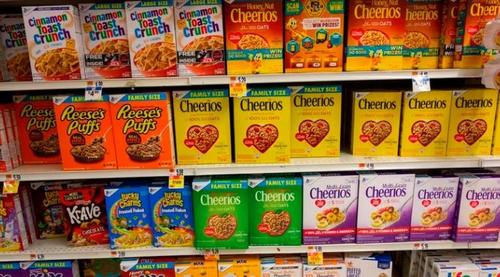The continued decline in Treasury yields has prompted many short-sighted arm-chair analysts to declare that the Fed was right about inflationary pressures being “transitory”. Of course, as Treasury Secretary Janet Yellen herself admitted, a little inflation is necessary for the economy to function long term – because without “controlled inflation,” how else will policymakers inflate away the enormous debts of the US and other governments.
As policymakers prepare to explain to the investing public why inflation is a “good thing”, a report published this week by left-leaning NPR highlighted a phenomenon that is manifesting in grocery stores and other retailers across the US: economists including Pippa Malmgren call it “shrinkflation”. It happens when companies reduce the size or quantity of their products while charging the same price, or even more money.
As NPR points out, the preponderance of “shrinkflation” creates a problem for academics and purveyors of classical economic theory. “If consumers were the rational creatures depicted in classic economic theory, they would notice shrinkflation. They would keep their eyes on the price per Cocoa Puff and not fall for gimmicks in how companies package those Cocoa Puffs.”
However, research by behavioral economists has found that consumers are “much more gullible than classic theory predicts. They are more sensitive to changes in price than to changes in quantity.” It’s one of many well-documented ways that human reasoning differs from strict rationality (for a more comprehensive review of the limitations of human reasoning in the loosely defined world of behavioral economics, read Daniel Kahneman’s “Thinking Fast and Slow”).
Just a few months ago, we described shrinkflation as “the oldest trick in the retailer’s book” with an explanation of how Costco was masking a 14% price hike by instead reducing the sheet count in its rolls of paper towels and toilet paper.
NPR’s report started with the story of Edgar Dworsky, who monitors grocery store shelves for signs of “shrinkflation”.
A couple of weeks ago, Edgar Dworsky walked into a Stop & Shop grocery store in Somerville, Mass., like a detective entering a murder scene.
He stepped into the cereal aisle, where he hoped to find the smoking gun. He scanned the shelves. Oh no, he thought. He was too late. The store had already replaced old General Mills cereal boxes — such as Cheerios and Cocoa Puffs — with newer ones. It was as though the suspect’s fingerprints had been wiped clean.
Then Dworsky headed toward the back of the store. Sure enough, old boxes of Cocoa Puffs and Apple Cinnamon Cheerios were stacked at the end of one of the aisles. He grabbed an old box of Cocoa Puffs and put it side by side with the new one. Aha! The tip he had received was right on the money. General Mills had downsized the contents of its “family size” boxes from 19.3 ounces to 18.1 ounces.
Dworsky went to the checkout aisle, and both boxes — gasp! — were the same price. It was an open-and-shut case: General Mills is yet another perpetrator of “shrinkflation.”
It’s also being used for paper products, candy bars and other packaged goods.
Back in the day, Dworsky says, he remembers buying bigger candy bars and bigger rolls of toilet paper. The original Charmin roll of toilet paper, he says, had 650 sheets. Now you have to pay extra for “Mega Rolls” and “Super Mega Rolls” — and even those have many fewer sheets than the original. To add insult to injury, Charmin recently shrank the size of their toilet sheets. Talk about a crappy deal.
Shrinkflation, or downsizing, is probably as old as mass consumerism. Over the years, Dworsky has documented the downsizing of everything from Doritos to baby shampoo to ranch dressing. “The downsizing tends to happen when manufacturers face some type of pricing pressure,” he says. For example, if the price of gasoline or grain goes up.
The whole thing brings to mind a scene from the 2000s comedy classic “Zoolander”.
